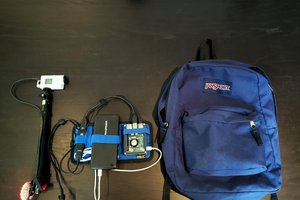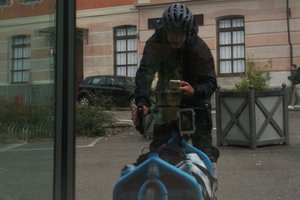The plan: to build an uninterruptible Internet source for IRL streaming
Many will argue that IRL streaming can be done with just your smartphone, using cellular data, or by using your smartphone as a Wi-Fi hotspot for your Go-Pro or video camera. This cannot be true in all cases. Cellular coverage is not homogenous or ubiquitous, especially when you’re at the outskirts of a city, or in an area that’s prone to poor mobile signal, like an underground passage or inside a building. That’s why it’s important to get your Internet from at least 2 different cellular carriers. This way, if one’s network fails, you can use the other.
And since we're talking about IRL streaming, we will need to make sure the stream will not stop or drop while we switch between Internet sources. The best way to do that is by using channel bonding technology. We don't like to carry bulky equipment with us, so we used Speedify bonding VPN.
Requirements for the Raspberry Pi IRL Streaming Hotspot
- Portable USB-C battery pack – to power the Raspberry Pi and, if needed, the smartphones you’ll use for connection bonding
- Raspberry Pi 4
- Smartphone or other WiFi-enabled camera to record – Go-Pro, etc.
- Smartphones that you will tether to the Pi via USB
- Backpack to carry the devices
All you have to do is run Speedify on the Raspberry Pi and combine two or more data connections from different carriers. You also have to set the Pi up to share the bonded connection over Wi-Fi to your video camera or smartphone you're using to do the actual live streaming.
We used the Streamlabs app to customize our Twitch streaming settings. While connected to the hotspot we were able to IRL stream in HD on the go, without worrying about weak signal.
 Speedify Labs
Speedify Labs

 Bernie Trinnes
Bernie Trinnes

 Matthew Gorr
Matthew Gorr
 Jelle Reith
Jelle Reith
We will be running a live stream on Dec 2 from 5 PM EST on building this. It's your chance to ask questions live: https://speedify.com/event/speedify-live-presents-diy-time-raspberry-pi-bonding-router-for-streaming/?utm_source=hackaday&utm_medium=website&utm_campaign=speedify-live&utm_content=irl-streaming-hotspot